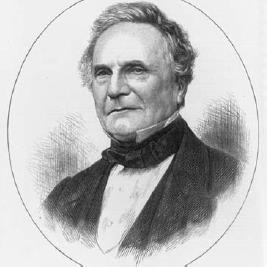General Science, Mathematics, and TechnologyComputers |
Who invented the computer? |
Computers developed from calculating machines. One of the earliest mechanical devices for calculating, still widely used today, is the abacus—a frame carrying parallel rods on which beads or counters are strung. The abacus originated in Egypt in 2000B.C.E. it reached the Orient about a thousand years later, and arrived in Europe in about the year 300C.E. In 1617, John Napier invented “Napier’s Bones”—marked pieces of ivory for multiples of numbers. In the middle of the same century, Blaise Pascal produced a simple mechanism for adding and subtracting. Multiplication by repeated addition was a feature of a stepped drum or wheel machine of 1694 invented by Gottfried Wilhelm Leibniz.
In 1823, the English visionary Charles Babbage (1792–1871) persuaded the British government to finance an “analytical engine.” This would have been a machine that could undertake any kind of calculation. It would have been driven by steam, but the most important innovation was that the entire program of operations was stored on a punched tape. Babbage’s machine was not completed in his lifetime because the technology available to him was not sufficient to support his design. However, in 1991 a team led by Doron Swade (1946–) at London’s Science Museum built the “analytical engine” (sometimes called the “difference engine”) based on Babbage’s work. Measuring 10 feet (3 meters) wide by 6.5 feet (2 meters) tall, it weighed three tons and could calculate equations down to 31 digits. The feat proved that Babbage was way ahead of his time, even though the device was impractical because one had to turn a crank hundreds of times in order to generate a single calculation. Modern computers use electrons, which travel at nearly the speed of light.
Based on the concepts of British mathematician Alan M. Turing (1912–1954), the earliest programmable electronic computer was the 1,500-valve “Colossus,” formulated by Max Newman (1897–1985), built by T.H. Flowers, (1905–1998) and used by the British government in 1943 to crack the German codes generated by the cipher machine “Enigma.”

